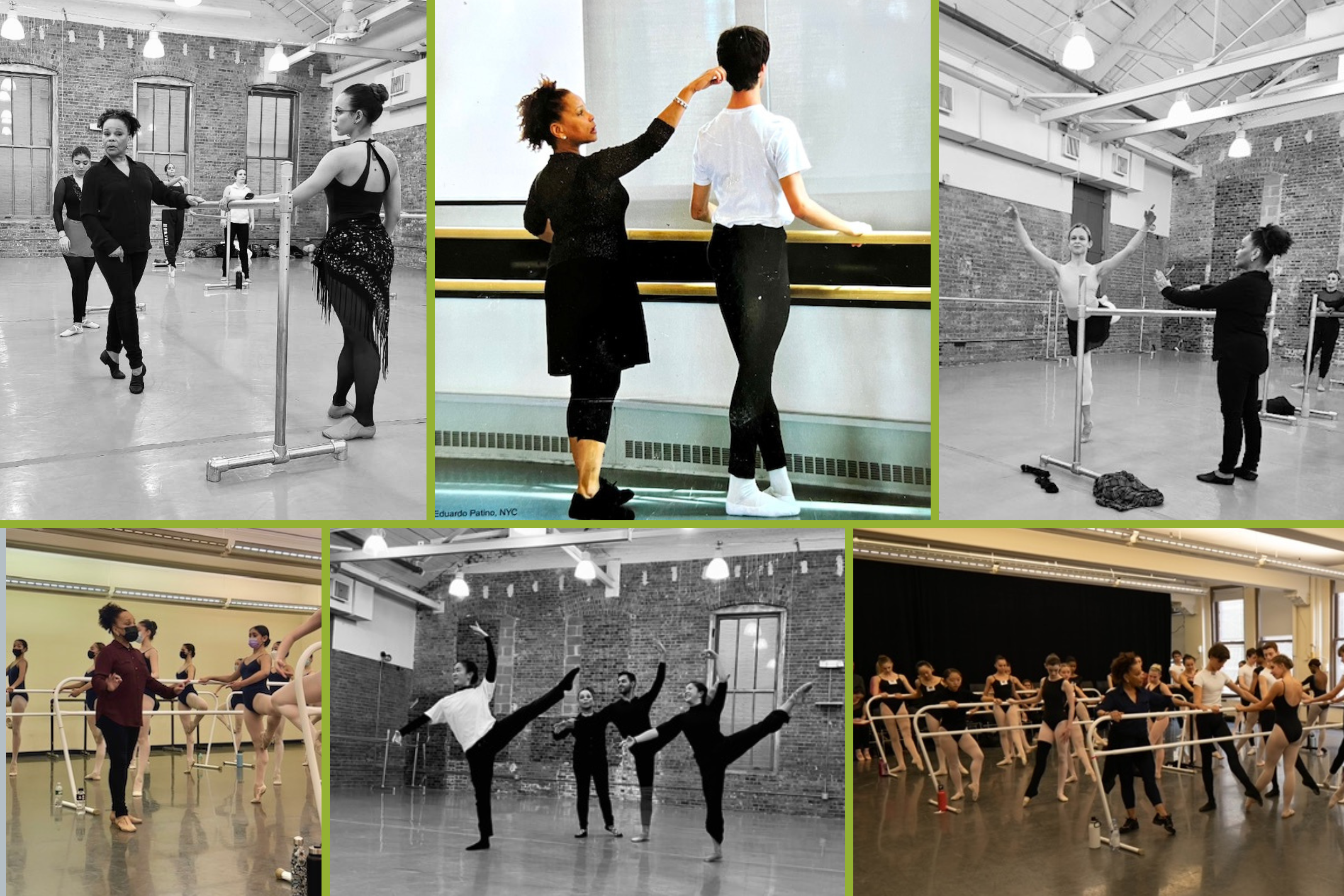
When it comes to teaching a grand rond de jambe en l’air, New York City–based master teacher Caridad Martinez infuses equal parts technique and elegance for this tricky one-legged yet full-bodied phenomenon. Typically included in an intermediate/advanced barre series or in a center floor adagio combination, the rond de jambe en l’air requires precision and control as the dancer moves her extended working leg a full 180 degrees from front to back (en dehors) or back to front (en dedans).
Martinez, a former National Ballet of Cuba principal dancer and current American Ballet Theatre instructor notes that for technical mastery, a dancer must maintain strength and control in both her abductors of the legs and upper body. “With the movement of the leg from à la seconde to arabesque, there is so much attention paid to the open leg,” she says. “Dancers end up turning their hips in.” She recommends a full-bodied approach, with special attention paid to the supporting leg.
Here she shares her lesson plan for grand rond de jambe en l’lair.

Step by Step
Step 1: Start with the right posture
Make sure your students are starting off with a solid foundation before they get moving. The head should be stacked over the shoulders, which should be aligned over the hips. Dancers should be turning out from the hips, not the knees or ankles. “Imagine that your pelvis is at 6 pm and your belly is 12 am,” says Martinez. “When you do that, you can feel space in the hip joint. When you feel that space, you will feel the rotation.”
Step 2: Rond de jambe a terre in quarters
Before taking the working leg into the air, practice rond de jambe on the floor. Start with quarter circles, taking the leg from front to side and then closing; side to back, close, etc.
Next, move to en l’air at 45 degrees, with both hands on the barre. Building up to a greater range of motion in this methodical way will help dancers to build solid habits in the upper body and hip placement. “You first need to have a very simple grand rond de jambe with total control of the pelvis,” says Martinez.
Step 3: Focus on the standing leg
Martinez’s approach hinges on zeroing in on the standing leg—specifically, creating space in the coxofemoral (ball-and-socket hip) joint. “Creating space in this joint is necessary in order for the leg to go into arabesque,” she says. “When the student is doing rond de jambe en dehors, having space in the joint helps the leg pass to arabesque softly.”
Step 4: Tune up the torso
With so much going on in the hips and legs, it can be easy to forget about the upper body. However, a technically sound grand rond de jambe en l’air includes a long and strong torso that moves just enough to allow the leg to rotate.
Martinez notes that with rond de jambe en dedans, the student must remember to pull up quickly in the torso before the working leg gets to second position. Dancers should pull up from the hip joint in the standing leg to create space to the leg en l’air as it rotates to the front.
Dos and Don’ts of Rond de Jambe en l’Air
Do:
- Allow the pelvis to move just enough to achieve the desired range of motion.
- Maintain a sense of elongation in the torso, standing leg and working leg.
- Think of extending both legs further into space as you move from à la seconde to arabesque (en dehors).
- Keep the hip joint spacious while moving the working leg from arabesque to à la seconde (en dedans).
- Take advantage of your flexibility and dynamic range of motion while focusing on strength and stability in your supporting hip abductors.
Don’t:
- Lock the hips.
- Move the pelvis excessively, especially to the back or front, while shifting the working leg from à la seconde to the arabesque.
- Tuck the pelvis.
- Move in a sudden or uneven way, especially when moving from arabesque to à la seconde (en dedans). The rond de jambe should be smooth and continuous.
- Forget about your torso.
4 Exercises for Perfecting Rond de Jambe en l’Air
1. Practice rond de jambe à terre with the standing leg in demi-plié. This helps students develop control in the torso and standing-leg hip joint.
2. Practice grand rond de jambe en l’air in attitude. This helps with hip articulation and teaches dancers to have more control in the rotation of the working leg.
3. Break down the grand rond de jambe into smaller chunks. Start with the working leg in à la seconde and move to arabesque (en dehors). Then repeat from à la seconde to devant (en dedans). This could be done with the standing leg either in plié or straightened. Maintain focus on the strength and stability in the standing leg.
4. Challenge dancers with finishing in relevé at the end of the rond de jambe. “When I have dancers end on relevé, I see the control and the cleanliness,” says Martinez.
Watch the full-length video tutorial below:





